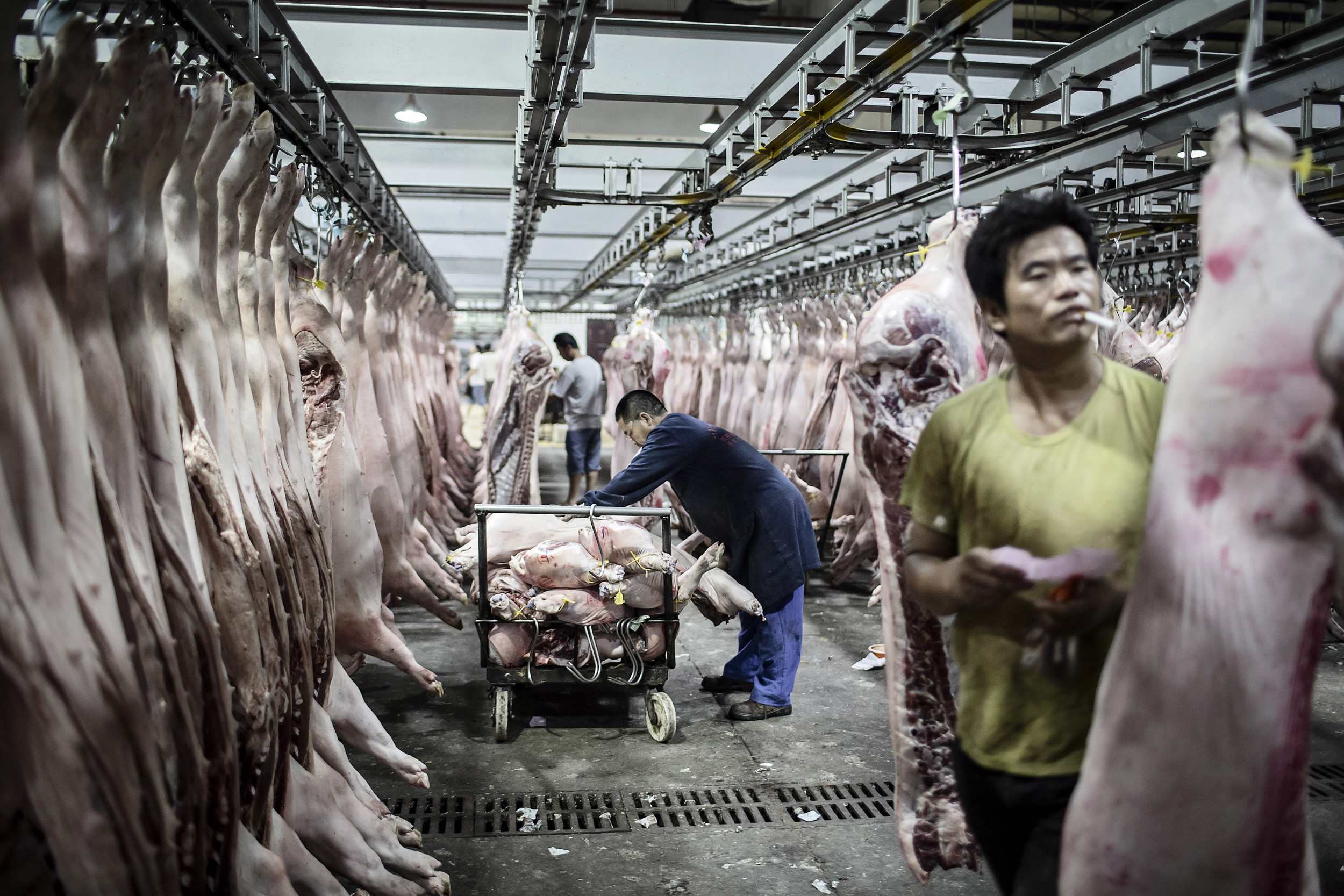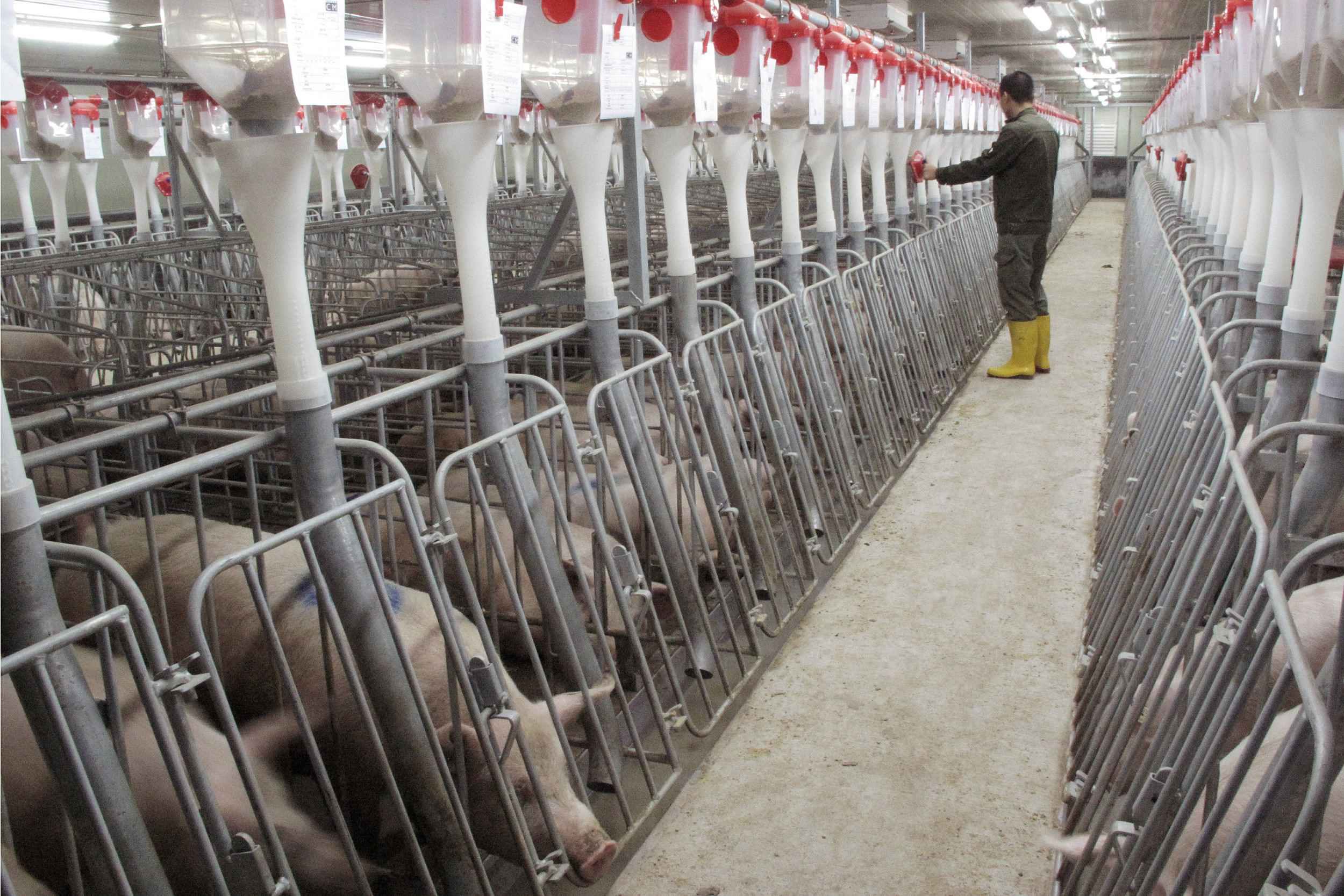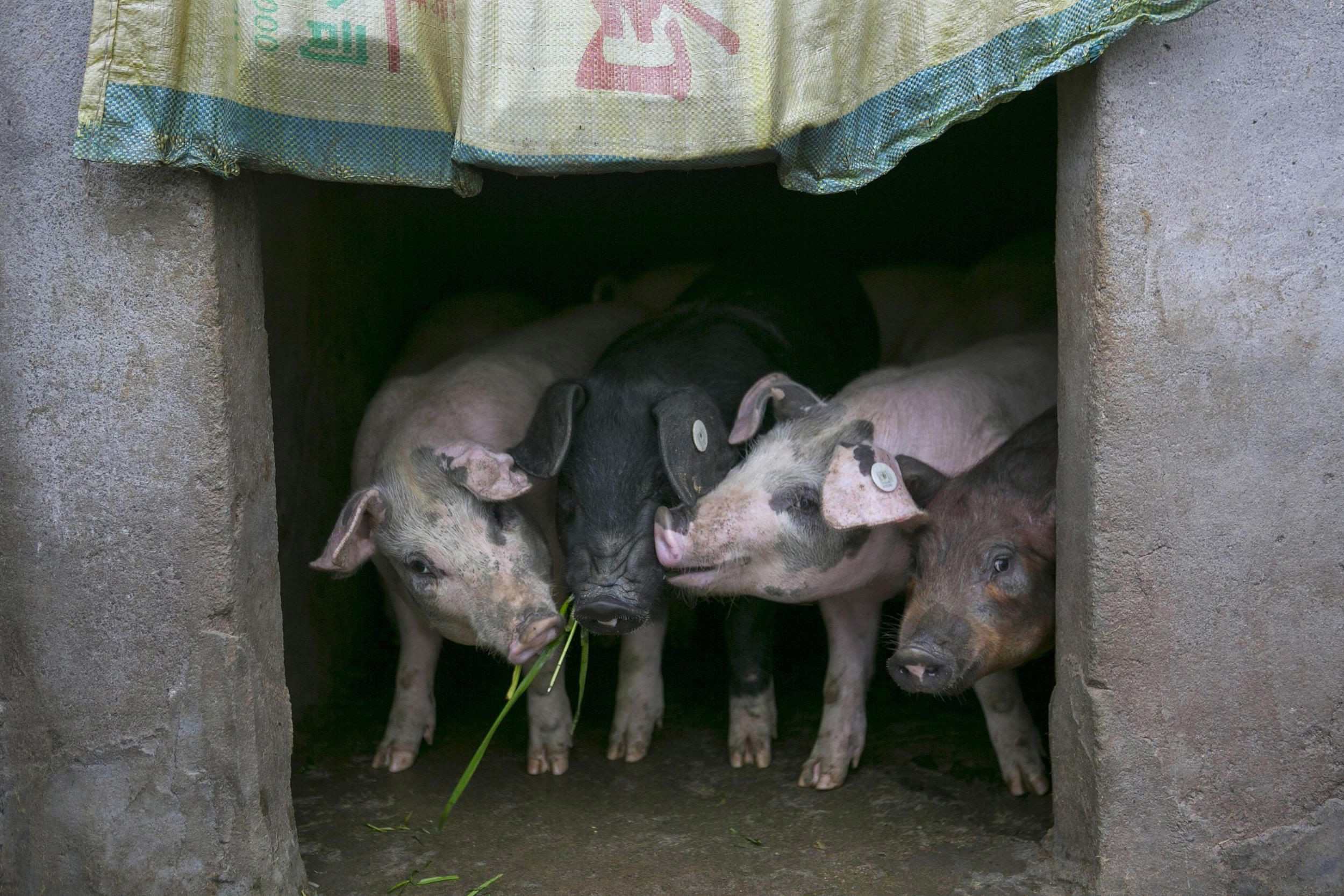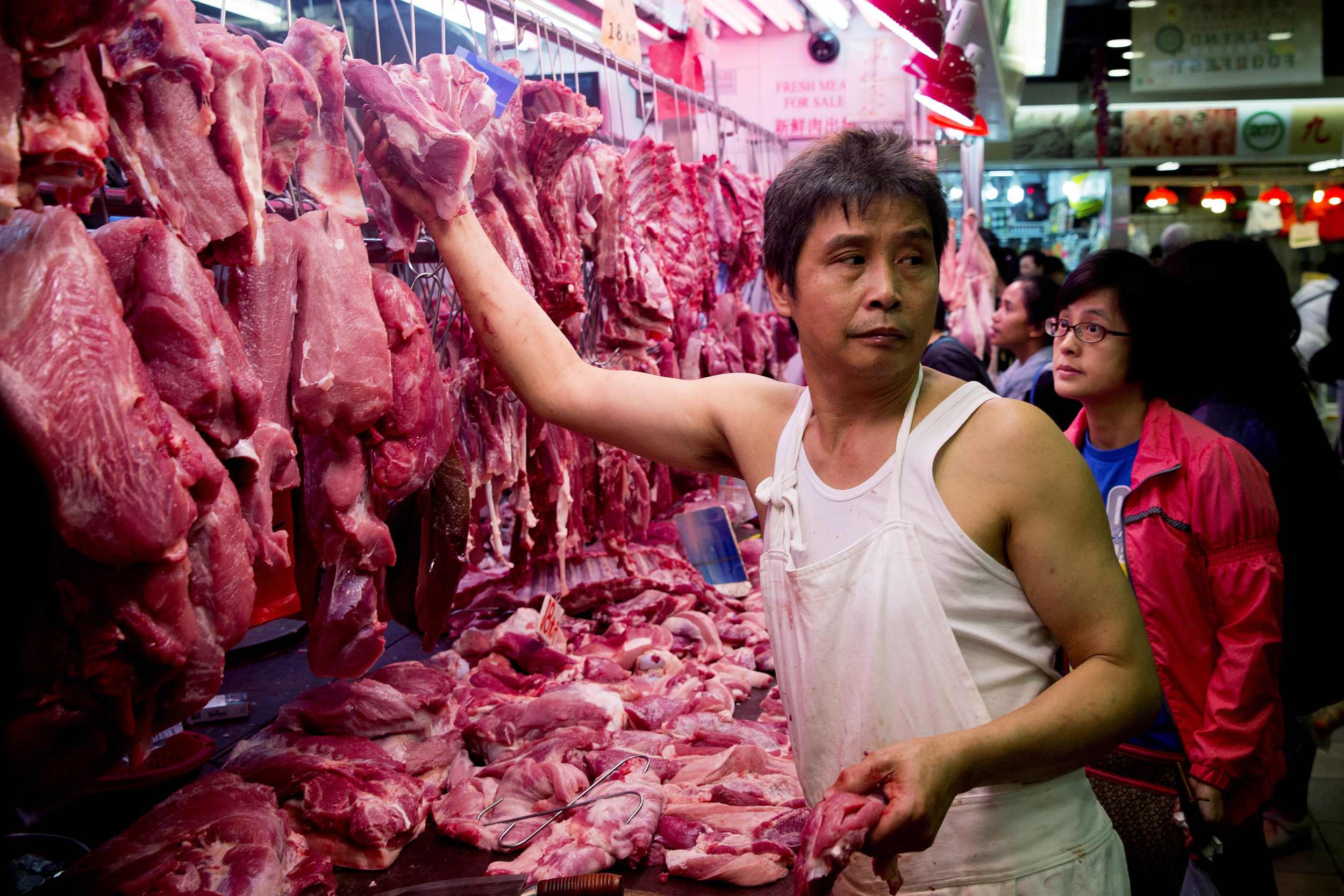
Business
16:24, 08-Feb-2018
Chinese pork prices tumble amid megafarm revolution
Nicholas Moore

Pork prices in China have fallen significantly in the past month, despite the world’s biggest consumer of pig products being just one week away from the Spring Festival.
The week-long festival usually sees a peak in demand for pork, as families gather for traditional meals. However, data being reported in Chinese media suggests that prices have fallen over ten percent in the past month, down to 13.67 yuan (2.18 US dollars) per kilogram. That’s a drop of more than 20 percent compared to a year before.
What’s behind the drop? In a country where, according to The Economist, the average person eats 40 kilograms of pork per year, farmers have struggled in recent years to keep up with a burgeoning demand that has increased alongside the rapidly growing economy.

A worker carries slaughtered pig carcasses onto a cart at a meat wholesale market in Shanghai, China, on Wednesday, Aug. 17, 2016. /VCG Photo
A worker carries slaughtered pig carcasses onto a cart at a meat wholesale market in Shanghai, China, on Wednesday, Aug. 17, 2016. /VCG Photo
Estimates suggest China consumes around 55 million tons of pork per year, approximately half of the global total. The price of pork is so important that it is widely believed to have an impact on inflation and other food prices.
This has led to the agricultural sector undergoing a massive transformation, as it adopts new techniques to breed and cull more pigs than ever before, along with moves to import pork products from overseas in a bid to boost and stabilize supply.
According to Reuters, 2018 will see the development of new “supersize” pig farms, with one project in Guangxi Zhuang Autonomous Region, owned by agricultural giant Xinguangan, capable of producing 280,000 piglets per year, or 20,000 tons of meat.

A worker checks sows on a large-scale pig farm owned by the Xinguangan company in Wuxuan County, Guangxi Zhuang Autonomous Region, December 14, 2017. VCG Photo
A worker checks sows on a large-scale pig farm owned by the Xinguangan company in Wuxuan County, Guangxi Zhuang Autonomous Region, December 14, 2017. VCG Photo
Hundreds of “megafarm” projects using sophisticated technology are being supported across the country, industrializing the pork production sector, reducing costs and massively increasing market supply.
They are set to revolutionize pig farming, with half of the current domestic pork products still coming from family-owned small-scale farmsteads. Authorities have given firm backing to modern large-scale farming, with smaller farms forced to close after failing to meet new pollution standards.
With 70 billion yuan (10.9 billion US dollars) invested in the pork sector since 2016, farmers are increasingly paying more attention to the quality of their animals as well of their equipment. This has led to cooperation with partners overseas to import breeding pigs genetically selected for their quality meat, litter sizes and faster growth.

Fifty percent of China's pigs are still sourced from small-scale farms, like this one in Changzhou, Jiangsu Province. /VCG Photo
Fifty percent of China's pigs are still sourced from small-scale farms, like this one in Changzhou, Jiangsu Province. /VCG Photo
British company Genus, which breeds and provides such breeding sows to China, saw its profits grow by 80 percent in 2017, and told Reuters that it could not keep up with demand.
Foreign pork companies were alerted to the huge potential of China’s appetite for meat in 2013, when Smithfield – the US’ biggest pork producer – was purchased by Henan-based WH Group for 4.7 billion US dollars.
As prices reached a record 21 yuan (3.18 US dollars) per kilogram in 2016, countries like the UK, Canada and France signed deals with China on exporting more pork to the Middle Kingdom.
However, Smithfield’s exports to China fell by 12 percent in the first three quarters of 2017, despite its overall global exports increasing by 20 percent.
In November, the WH Group released its forecast for 2018, in which it suggested pork prices would fall sharply because of the sudden boom in supply brought on by massive domestic farming projects.

/VCG Photo
/VCG Photo
While pork prices are expected to decrease this year further, authorities expect the sector to stabilize in the long-term. On Tuesday, a live hog futures index was approved by the China Securities Regulatory Commission, several months after the launch of the world’s first apple futures index.
While the introduction of a futures index will aim to tackle volatility in the pork sector and allow farmers to hedge and prevent losses, critics have said the futures index would be hard to implement because of a lack of standardization in the industry, in terms of hog breeds and farming techniques.

SITEMAP
Copyright © 2018 CGTN. Beijing ICP prepared NO.16065310-3
Copyright © 2018 CGTN. Beijing ICP prepared NO.16065310-3